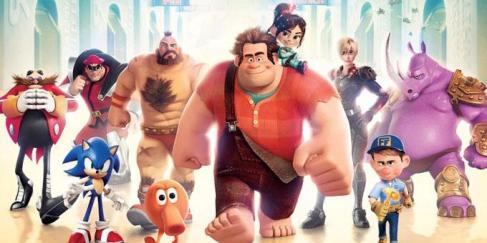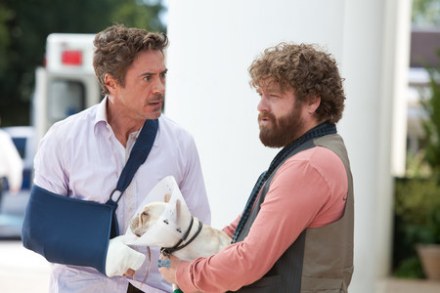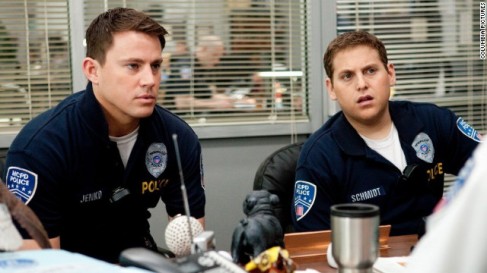
First up, I’m not a huge fan of Quentin Tarantino’s films.
In the past I have preferred his films when he’s exercised more restraint – Reservoir Dogs and Jackie Brown – and whilst I appreciated certain technical and structural aspects in Pulp Fiction and the Kill Bills, the films didn’t engage me in any way the registered real emotion or investment on my part as a viewer. And I think that’s the point with Tarantino’s films.
They’re fun, and enjoyable, in their stylised show-offiness and irreverence with the form, but ultimately it’s like going to the show grounds as a kid and going on all the rides. They’ll entertain you, for a brief period that you’re on them, but in the end they never go for as a long as you’d like, and they always cost more than you expect, and at all times there’s never any feeling that they’re giving you an experience that will affect your life.
I did enjoy Inglourious Basterds but as I’ve come to reflect on it, I enjoyed the opening sequence with Landa and the dairy farmer immensely, and then every sequence from that onwards less and less. It was fun, and silly, but ultimately didn’t actually offer up anything that made watching the film worthwhile.
So, finally to Django Unchained. In short, I had great fun watching this. So much more than I had expected to. Quickly, for me, 2013 is shaping up as the Year of Unexpected Joy in cinema. (As opposed to 2012, the Year of Ungodly Disappointment.) Two moments especially stood out. The first was the first bounty mission where Jamie Foxx’s Django accompanies Christoph Waltz’s King Schulz, which builds and builds into a mini-climax of pure cinema. It was everything you want in film: at turns dramatic and lofty, at others bloody and excessive, and for Tarantino it was unexpectedly poignant, emotional and restrained. And fun. Serious fun.
The only part of the film that eclipsed this sequence happens almost two-thirds of the way through. A dinner sequence between Django, Shulz, and Leonardo Di Caprio’s Calvin Candie (and his retinue) is astonishing. Long, twisting, ever-playful, this could easily serve as the major third-act climax of any film in its heightened drama. That it doesn’t, shows Tarantino’s refusal to offer up a simple film. What this sequence does best though is show-off his mastery of writing brilliant dialogue.
Much has been said of the violence in his films, and in this one in particular, but it’s a fruitless path to go down. There is very little violence in the key moments, like this sequence, and the action – so to speak – is with the words. Particularly in who controls the words. For most of the film, the controlling character is Schulz, who always appears to know more than everybody else and uses his words to achieve his own results. What makes this sequence so incredible, is the shifting control of the dialogue from Schulz, to Candie, and then to anybody who’ll claim it. It plays with the audience perfectly, and is almost a shame when it’s over.
The ending is almost perfunctory after this, but it’s handled with so much fun it’s hard to disappoint. The violence, as mentioned, is irrelevant. Tarantino shows in this particular film that he knows what he’s doing. The violence of revenge and retribution (usually towards those involved in the slave-trade) is over the top and comical. It is cinematic blood-letting, much the same as killing Nazis in Inglourious Basterds was. But the other violence, the real, factual violence of slavery in antebellum America is astonishingly restrained and withheld. Much is implied in cuts and sound, and most is kept offscreen. As a result, it is far more horrific for utilising our imagination rather than our blood-lust. A grown-up Tarantino indeed.
And so this is why I liked Django Unchained much more than many of his films. It did all that we come to expect from a Tarantino film, but it did more. It actually offered up some relevance and dialogue with a contemporary world. It’s hard to judge being out of the context of US society, but the acknowledgement and brutalising of white slave traders in this film is a necessary acknowledgement from white cinema. That Tarantino effectively kills off himself in this film – and his casual and flippant treatment of African American society in previous films – is something that I think he needed to do.
That Australia is included in this killing off – through the cameo of John Jarratt – is hopefully not missed by people, as it was hard to do so by me given that I saw this on Australia Day, in hardly a celebratory mood.
Final note: Samuel L. Jackson can act. Never seen this before.










